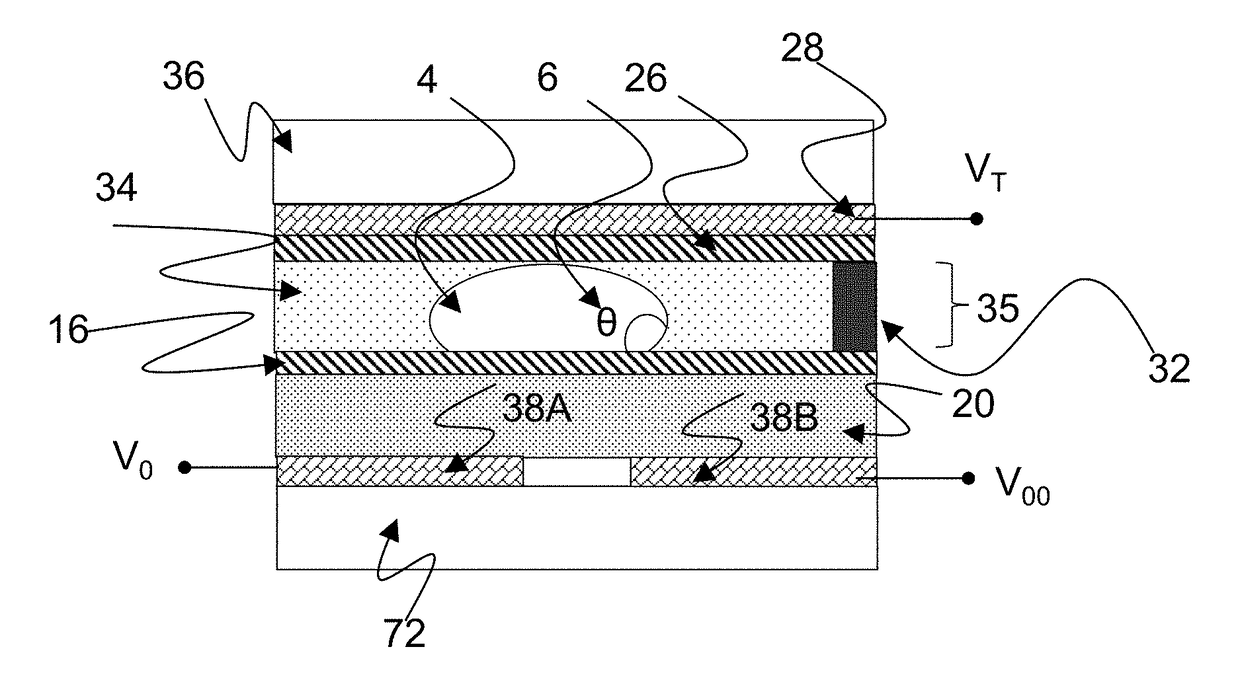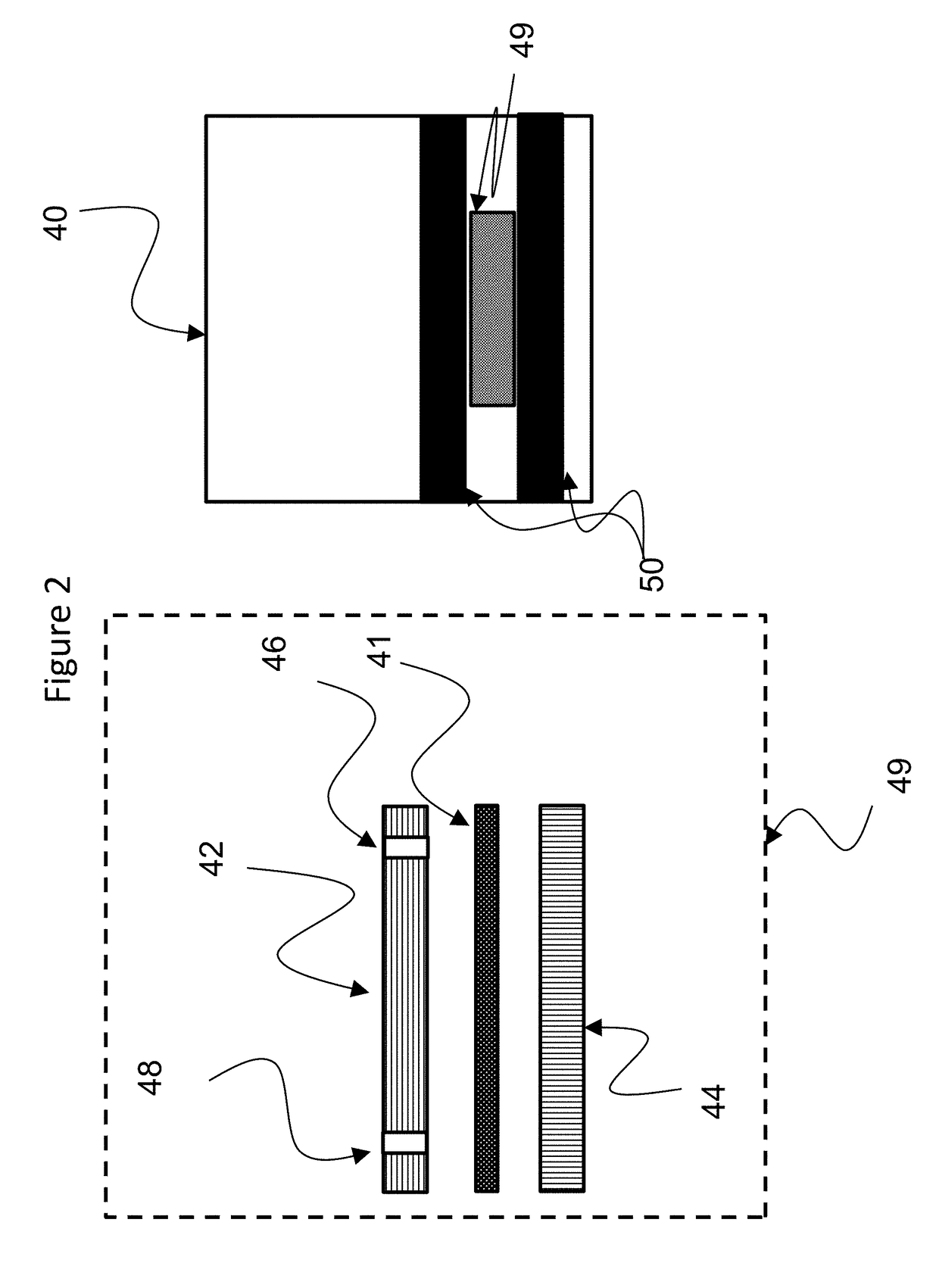Temperature control system for microfluidic device
a technology of microfluidic devices and control systems, which is applied in fluid controllers, laboratory glassware, instruments, etc., can solve the problems of limiting the temperature gradient that droplets experience, the complexity of design and control methods, and the linearity of spatial temperature gradients, so as to reduce the lateral flow of heat within the device, reduce the lateral flow of heat, and control the temperature profile. the effect of high degree of freedom
- Summary
- Abstract
- Description
- Claims
- Application Information
AI Technical Summary
Benefits of technology
Problems solved by technology
Method used
Image
Examples
embodiment 1
[0098]FIG. 2 shows an exemplary droplet microfluidic handling system according to a first embodiment of the present invention. The system is in two parts comprising a cartridge 49 and a reader 40.
[0099]The cartridge 49 is shown comprised of the EWOD device 41, which may optionally be mounted into a housing, e.g. a plastic housing to form a microfluidic cartridge 49. The housing may, for example, be comprised of upper 42 and lower 44 plastic parts, though this is a matter of design and many arrangements are possible. Typically the cartridge 49 includes input structures 46 (e.g. holes) for entry of fluids and may optionally also include output structures 48 whereby liquid may be ejected from the device. The input and output structures are connected fluidically to the fluid gap 35 (not shown in FIG. 2) of the EWOD device whereby fluid may be input to and / or extracted from the EWOD device. The EWOD device typically contains a dispensing structure for generating liquid droplets 4 in the ...
PUM
 Login to View More
Login to View More Abstract
Description
Claims
Application Information
 Login to View More
Login to View More - R&D
- Intellectual Property
- Life Sciences
- Materials
- Tech Scout
- Unparalleled Data Quality
- Higher Quality Content
- 60% Fewer Hallucinations
Browse by: Latest US Patents, China's latest patents, Technical Efficacy Thesaurus, Application Domain, Technology Topic, Popular Technical Reports.
© 2025 PatSnap. All rights reserved.Legal|Privacy policy|Modern Slavery Act Transparency Statement|Sitemap|About US| Contact US: help@patsnap.com



